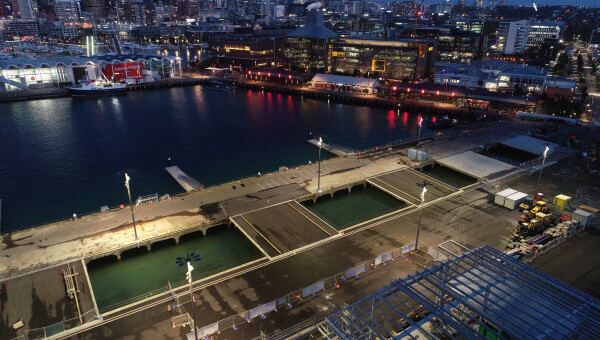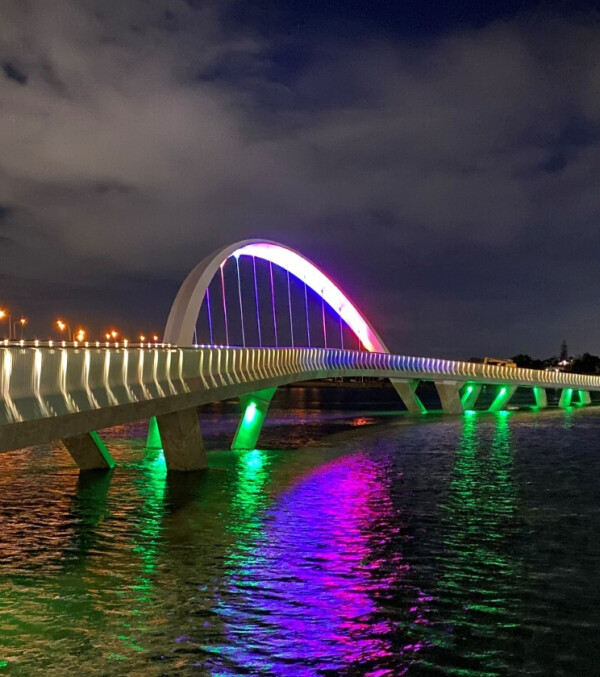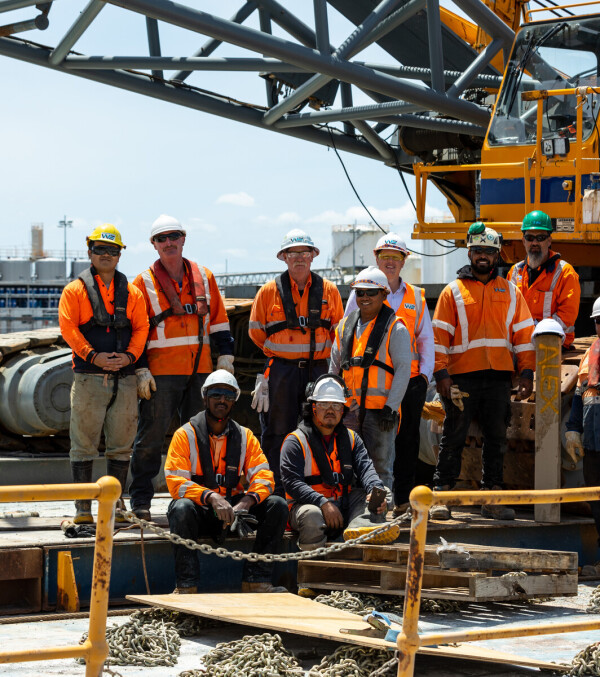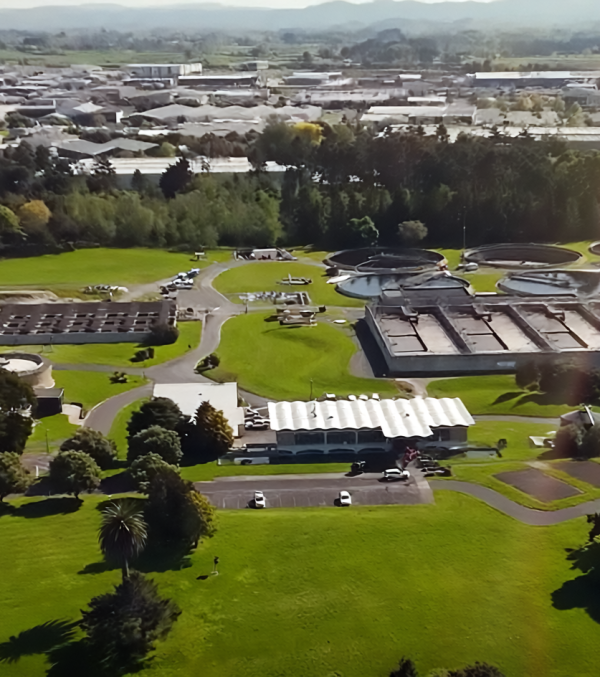|
Customer: Wynyard Edge Alliance Contract: Alliance Location: Auckland |
Fast Facts
|
We were members of the Wynyard Edge Alliance (WEA) - the team formed to design and construct the infrastructure for the 36th America’s Cup (AC36) event in Auckland in 2020/2021.
AC36 was a globally visible project with a complex stakeholder environment and an immovable deadline. It required a team who could be innovative and flexible to ensure deadlines were achieved on time.
The work was funded by Auckland Council and Central Government as the Alliance Participants. The Non-Owner Participants were ourselves and Downer as constructors, and designers Beca and Tonkin+Taylor. WEA’s capability was increased with the resources of Brian Perry Civil who joined as a sub-Alliance partner to deliver specialist piling across the project.
The team was able to overcome challenges relating to scope optimisation and budget constraints, while maintaining the works programme to achieve the 13 milestone dates.
WEA was the first alliance for the Owner Participants and a successful example of the alliance model where risk and opportunity are shared and managed collectively. The new facilities will bring long-term benefits to the people of Auckland and visitors, in much the same way that the Viaduct Harbour was developed for the first Cup Defence in 2000. The key elements of the Wynyard Edge Alliance project include:
- Build seven breakwaters
- Build marine bases for Emirates Team New Zealand (ETNZ), Challenger of Record, and other entries
- Achieve water tranquillity across all inner harbours for vessel navigation
- Install floating berths for superyachts
- New urban park developed in what was previously a marine industrial area
Additional works to support the project also include:
- To build and connect 500m of 3.5m diameter stormwater pipe
- Construct a new road, streetscape and Silo Park along Wynyard Point
The challenge
The project, funded by New Zealand Government and the Auckland City Council, will be completed within a tight timeframe in advance of the 36th America’s cup competition planned for 2021.
The design and construction of a new base in a busy urban environment and the amount of work to be completed above water presents unique safety and environmental challenges.
As the new facilities for the cup are in an area surrounded by businesses, a museum, restaurants, residents and pedestrians, their inputs into how the work is carried out are also important.
The solution
Innovative construction methods and new technologies were developed to help deliver the project on time, minimise impacts on the environment and keep people safe.
The organisation of different work fronts is an important factor enabling the team to meet key deadlines. Rather than using trucks which would need to travel through Auckland’s increasingly congested CBD all the key plant and materials were transported to site on barges.
This alternative not only saved time it also provided better environmental outcomes by reducing carbon emissions. Using the harbour as a transport route mitigated the health and safety risks associated with road travel and reduced the distances heavy machinery and materials needed to be moved. Having the alternate access also meant equipment could be delivered directly to the harbour-side site and leave the road entrance free for other traffic.
Collaboration with partners and stakeholders started early to build strong relationships and to adapt management plans and construction methods to address their concerns around the timing and nature of work near sensitive receivers such as the Maritime Museum. In addition, the team is working directly with the race teams to understand their specific requirements.
Creative solutions to environmental monitoring such as using drones to document progress and ensure that sediment around the piling works was within acceptable limits were developed. The drones could determine much more accurately if any sediment had spread, and document tidal flows and other factors which enabled the team to better protect the health of nearby marine life and prevent the degradation of water quality.
Key to success
The Alliance model creates an integrated team structure where all parties work together, from the designers, to the constructors and the client representatives. This partnership model increases the effectiveness of the design, improves constructability, encourages sustainability and innovation in the use of materials as well as saving time.
The project partnered with Mana Whenua to identify and manage areas of concern and the iwi representatives are involved in preparing, reviewing and implementing management plans.
Early engagement, where construction and environment team members met regularly with Mana Whenua and key stakeholders such as the museum curators, local business owners, residents and advocacy group representatives, built strong foundations for the working relationships.
Wynyard Edge Alliance was the first project with a consent condition requiring mitigation around underwater noise. Marine mammals are sensitive to noise and vibrations underwater and this has been identified as a potential issue identified primarily during piling. The Alliance team developed a marine mammal observation strategy to mitigate this risk. It involved training three Alliance staff members to Department of Conservation (DOC) standards, so they could implement protocols such as visual checks for any marine mammals in the harbour before work starts, observing the harbour during work and monitoring noise and vibrations levels during piling.







